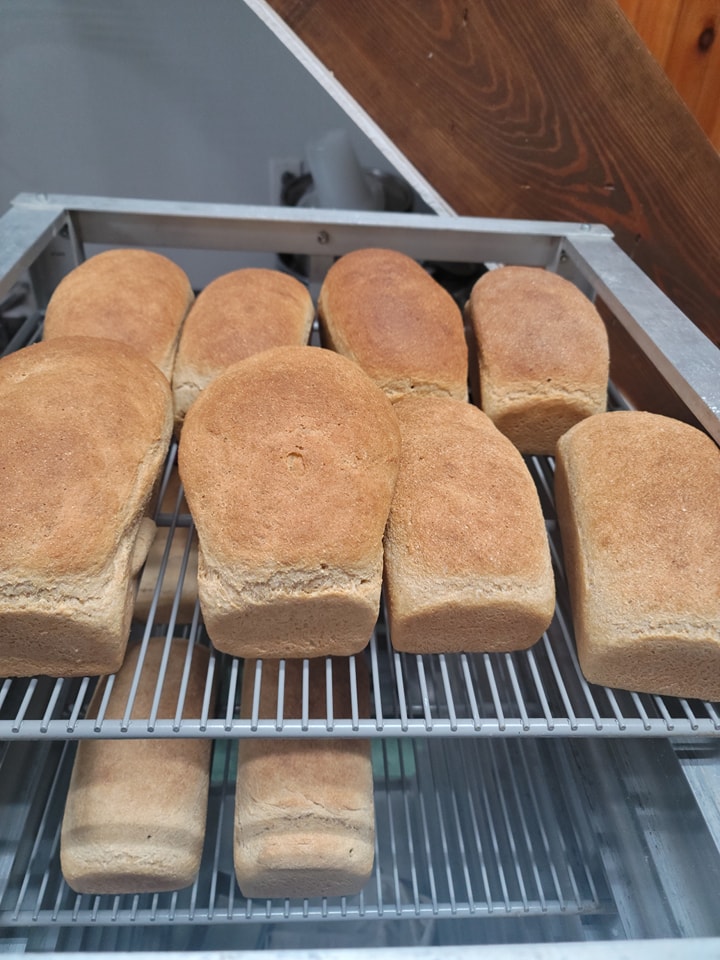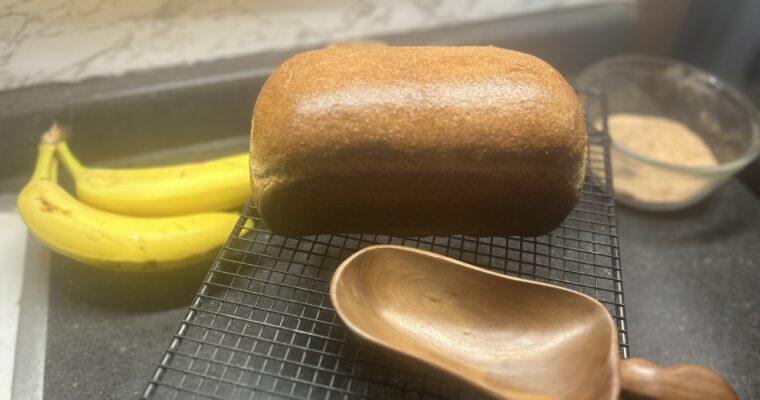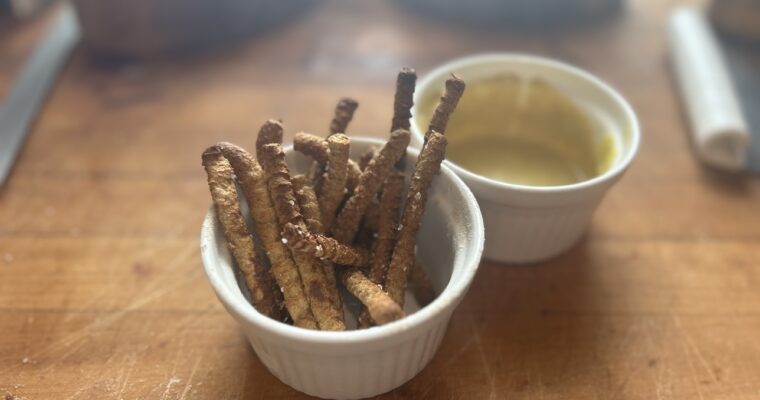Lean Bread Dough
This freshly milled basic bread dough is the perfect recipe to get started learning to bake with freshly milled, 100% whole grain flour. It’s different from white flour in how it responds, and it avoids the pitfalls of most baking by using techniques that help ensure bread that doesn’t crumble when you slice it (common to newbies in this realm).
I’ll be joining the way I have made bread (using yudane) with the way Monique Bell from Lovely Bell Bakes makes hers (a mixing autolyse).
A few notes, first:
Yudane Alternatives:
Yudane helps hold extra moisture in the dough, resulting in a more moist loaf of bread. It is simply put flour mixed together into a paste with boiling water. That’s all. You can simply leave it out or you can substitute 1/3 cup mashed potatoes, prepared oatmeal, or leftover hot cereal. All of these options have been cooked with boiling water, for gelatinization of starches, which will give you similar results.
Active Dry Yeast:
If you are using active dry yeast instead of instant yeast, your first step will be to reserve 100 g of the water in a dish. Add your yeast and sugar to this dish, give it a few minutes to get bubbly. This would be added in step #5, along with the salt and vitamin c.
Kitchen Aid Mixers:
The company recommends mixing bread dough for 2 minutes followed by a rest and another 2 minutes for a total of 4 minutes. I recommend your rest between steps 4 and 5 be at least fifteen minutes, and limit your mixing to save your mixer’s motor. This is why you don’t see me using one – I sold it!
First and Second Rise Times:
Anyone who tells you to mix or rise fresh milled bread dough for a certain amount of time is only sharing with you what worked for them in their kitchen at that moment with that exact set of ingredients. It can vary wildly depending upon your elevation, the humidity of your air, and even with the same exact grain grown at different times of the year. Use your eyes (to see how much the dough as risen and changed) and your hands (to test for windowpane to see if the gluten has been developed).
A Note on Oven Temps and Baking Times:
You can bake fresh milled bread at whatever temperature you like: 350 F, 375 F, 400 F, or a combination of them as demonstrated in the instructions above. The key is finding what works best for you in your kitchen. All these changes will affect the bread baking time, so check your dough temperature and be sure to remove it when the dough hits 190 F. If you go well over 200 F, the bread will be dry and crumbly. No one wants that.
Learn more about the steps of making freshly milled flour bread.

Basic Bread Dough
Equipment
- Mixer or danish dough whisk, or spatula
- gram scale saves on dishes, more accurate than cups and spoons
Ingredients
- 510 g wheat berries, soft white
- 340 g water
- 10 g sugar
- 33 g water, boiling
- 12 g yeast (instant)
- 6 g sea salt, celtic grey
- 1 g vitamin c powder use the 1/8 tsp, NOT the scale for this one
Instructions
- Mill the flour on the finest setting for your mill.
- Make the Yudane: mix 17 g of flour (2 tbsp) and mix it with the 33 g of boiling water in a small dish.
- Add water, Yudane, and sugar to a mixing bowl and begin mixing on low speed.
- Slowly add the remainder of flour to the mixing bowl as it spins, being careful to keep hands and utensils out of the mixing bowl, and let mix for about 5-7 minutes.
- Sprinkle the yeast, salt, and vitamin c into the dough, and let it mix for another few minutes until a windowpane consistency has been reached. This is done by turning off the mixer, and gently and slowly stretching the dough to see if light can be seen through it before breaking. If so, you’ve reached windowpane, and can move on. If your dough looks tough or dry, you can slowly drizzle water in during the mixing until it is a consistency you like.
- First Rise (optional): Let the dough rise, covered, until doubled.
- Punch down the dough doesn’t mean literally punch it, but you can if you like. Gently pull up on one side of the dough, and gently press it into the center of the dough ball. Turn the bowl by a quarter, and repeat until you’ve done this 4 times. This helps ensure a consistent dough temperature.
- Preheat your oven to 420 F.
- Shape the dough into a loaf. This does not mean just plopping the dough ball into a pan and letting it rise. We need to develop a smooth, taut skin on the dough so it rises in a controlled way. Check out some videos on the different ways to shape a loaf. There are many! This size loaf will fit nicely in a 9 x 5 inch pan.
- Second Rise (AKA Proofing): Place the dough into a greased or parchment paper lined bread pan, and let it rise until your finger pressed gently into the top does not spring back quickly. It should not deflate (if so, you let it rise too long).
- Place your bread pan gently into the middle of the oven, and close the oven door. Adjust the temperature to 375 F, and set a timer for 35 minutes.
- Check the temperature of the absolute middle of the dough by sticking it from the side with an instant read thermometer.
- Remove the bread from the oven when the dough has reached 190 F. For a loaf this size, it can typically take anywhere from 40-55 minutes.
- GENTLY remove the bread from the pan, and let it cool fully on a rack with air flow all around the loaf. This generally takes 3 hours. If you slice your hot bread early, it may get dense as the crumb is still solidifying while it cools. I don’t blame you if you do, but wait for a truly good loaf.
- Slice your bread with a serrated bread knife, and store on the counter for a few days, in the fridge if you have a very hot and humid environment, or slice and freeze the loaf for bread on the fly.



